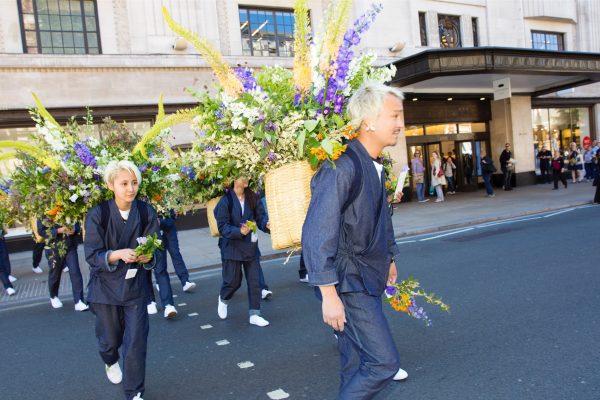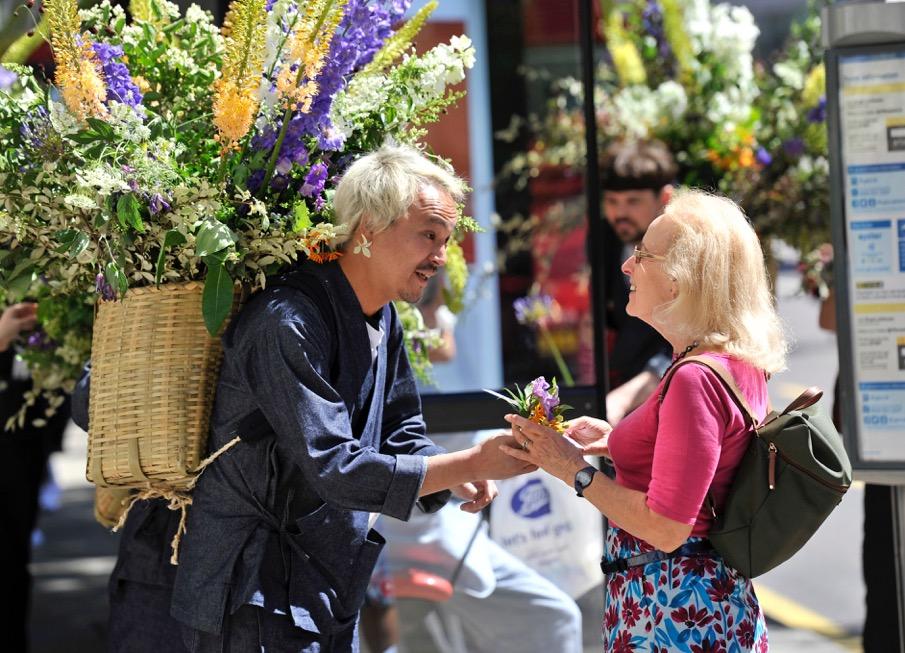Thirty flower messengers, reminiscent of the flower sellers in Japan’s traditional Edo period, walked the streets of Kensington in London on June 22, 2018. They carried baskets brimming with elaborate flower arrangements designed by flower artist Azuma Makoto to announce the arrival of “Japan in One Building,” a sentiment coined by Michael Houlihan, the director general of Japan House London, in its launch video.

The flower messenger procession led by Azuma Makoto along Kensington high street. Japan House London






